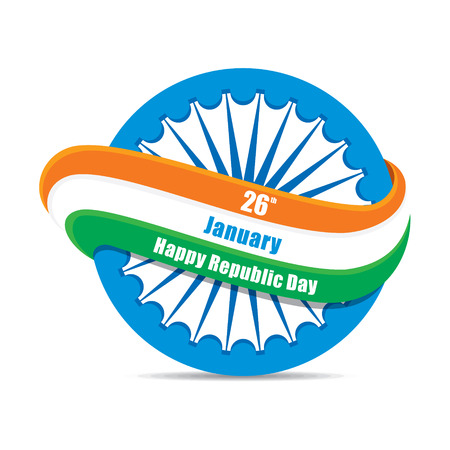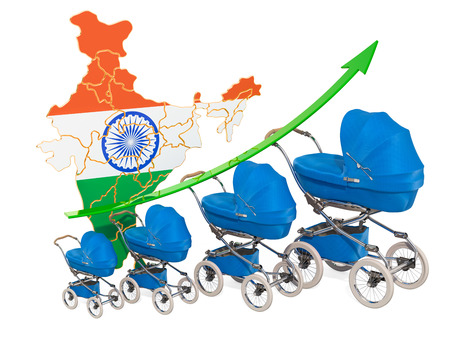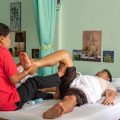1. Overview of Government Rehabilitation Services in India
Government rehabilitation services in India play a crucial role in supporting individuals and communities facing various physical, mental, and social challenges. These initiatives are designed to address the needs of people affected by disabilities, substance abuse, mental health issues, natural disasters, and socio-economic disadvantages. The Indian government, through both central and state agencies, has established a comprehensive network of rehabilitation programs that cater to the diverse requirements of urban and rural populations. These services aim not only to provide immediate care and relief but also to promote long-term inclusion, empowerment, and self-reliance among beneficiaries. By focusing on holistic recovery—covering medical support, vocational training, psychological counseling, and community integration—the government seeks to ensure that all citizens have access to opportunities for a dignified and fulfilling life. The importance of these efforts is especially evident in a culturally rich and geographically vast country like India, where differences in language, traditions, and socio-economic status create unique challenges for inclusive development. Through its rehabilitation policies and resources, the Indian government continues to strive towards building a more equitable society where every individual can contribute meaningfully regardless of their circumstances.
Central and State Schemes for Rehabilitation
India’s rehabilitation framework is shaped by a collaborative approach between the Central Government and individual state administrations. The focus is on providing holistic support to persons with disabilities, senior citizens, and other vulnerable groups, ensuring their inclusion in mainstream society. Several flagship schemes have been launched at the national level, while states further tailor these programmes to suit local needs.
Key Central Government Initiatives
| Scheme Name | Objectives | Main Beneficiaries |
|---|---|---|
| Deendayal Disabled Rehabilitation Scheme (DDRS) | To provide financial assistance to NGOs delivering education, vocational training, and rehabilitation services for persons with disabilities. | Persons with disabilities (PwDs) |
| Assistance to Disabled Persons for Purchase/Fitting of Aids and Appliances (ADIP Scheme) | To assist individuals in acquiring modern, standard aids and appliances that can promote their physical, social, and psychological rehabilitation. | Economically weaker PwDs |
| National Trust Act Schemes | Focuses on welfare of persons with autism, cerebral palsy, mental retardation, and multiple disabilities through various care and empowerment programmes. | PWDs with specified conditions & their families |
Role of State Social Justice Departments
Each Indian state has its own Social Justice Department or a similar nodal agency responsible for implementing central schemes and creating additional state-specific rehabilitation initiatives. These departments coordinate with local NGOs, hospitals, and community-based organisations to ensure last-mile delivery of services. For example:
- Tamil Nadu: Operates the State Resource-cum-Training Centre for persons with disabilities in Chennai, providing skill development and employment opportunities.
- Maharashtra: Runs district-level camps for distribution of aids under ADIP scheme in partnership with local authorities.
- Karnataka: Implements dedicated state grants for women with disabilities focusing on livelihood training and micro-enterprise support.
Flagship Initiatives: Deendayal Disabled Rehabilitation Scheme (DDRS)
The DDRS remains a cornerstone in India’s rehabilitation efforts. Under this scheme:
- NGOs receive funding to operate special schools, vocational centres, half-way homes, community-based rehabilitation projects, and awareness campaigns.
- The scheme prioritises rural outreach—bridging the urban-rural gap in access to quality rehabilitation services.
- The programme ensures regular monitoring and evaluation for transparency and effective impact at the grassroots level.
Cultural Sensitivity in Implementation
The success of these schemes often depends on how sensitively they are adapted to the unique linguistic, cultural, and socio-economic realities of each Indian state. Local languages are used in awareness material; traditional healers are sometimes involved as part of community-based interventions; and women’s self-help groups play a key role in spreading information about available government resources. This culturally grounded approach helps ensure no one is left behind on the road to rehabilitation.

3. Accessing Rehabilitation Facilities and Resources
For individuals seeking government rehabilitation services in India, it is important to understand the step-by-step process of accessing support through various public facilities. Government hospitals, district rehabilitation centres (DRCs), and block-level facilities are key points of contact for rehabilitation services across urban and rural areas.
Approaching Government Hospitals
Government hospitals typically have dedicated departments or units for physical, mental, and social rehabilitation. To access these services, individuals should visit the nearest government hospital with basic identification documents such as Aadhaar Card, ration card, or voter ID. Upon arrival, approach the reception or helpdesk to ask about the rehabilitation department. Registration is usually required, and a referral from a general physician within the hospital may be necessary for specialized care.
District Rehabilitation Centres (DRCs)
District Rehabilitation Centres operate under the District Disability Rehabilitation Centres (DDRCs) scheme and provide comprehensive services for persons with disabilities and those in need of various therapies. Beneficiaries can visit their local DRC with necessary documentation—ID proof, disability certificate (if available), recent medical reports, and address proof. The administrative staff will guide you through an assessment process to determine eligibility for schemes like free assistive devices, therapy sessions, or vocational training.
Block-Level Facilities
At the block level, Community Health Centres (CHCs) or Primary Health Centres (PHCs) often act as initial touchpoints for rehabilitation needs in rural areas. To avail services here, residents must bring identity documents and any relevant medical history. These centres can also refer cases to higher-level facilities if advanced intervention is needed.
Understanding Local Processes and Documentation
Administrative processes may vary by state and region. It is advisable to check specific requirements on state government portals or at the facility’s information desk. Common documents requested include identity proof (Aadhaar/voter ID), recent passport-size photographs, disability certificate (for disability-related services), income certificate (for availing subsidies), and medical prescriptions or reports.
Patience is essential while dealing with government offices in India due to potential wait times and procedural formalities. However, many states now offer online appointment systems and helplines to ease the process. If facing difficulties or language barriers, bringing along a trusted family member or local community worker can also help navigate administrative steps smoothly.
4. Support for Women and Marginalised Communities
In India, government rehabilitation services recognise the unique challenges faced by women and marginalised communities, including Scheduled Castes (SC), Scheduled Tribes (ST), children, and other vulnerable groups. Several special provisions and schemes are in place to ensure their social inclusion, empowerment, and holistic recovery.
Government Schemes Focused on Vulnerable Groups
The Indian government has launched targeted programmes to uplift these sections of society. These schemes focus on financial assistance, education, healthcare access, and legal protection. Below is a table highlighting some prominent initiatives:
| Scheme/Initiative | Target Group | Main Objectives |
|---|---|---|
| Beti Bachao Beti Padhao | Girls/Women | Promotes girl child education and combats gender-based discrimination |
| Sukanya Samriddhi Yojana | Girls/Women | Encourages savings for girls’ higher education and marriage expenses |
| SC/ST Rehabilitation Schemes | SC/ST Communities | Provides scholarships, skill training, and economic support for reintegration |
| Integrated Child Protection Scheme (ICPS) | Children (especially vulnerable) | Focuses on care, protection, and rehabilitation of children in need |
| National Rural Livelihood Mission (NRLM) | Women & Marginalised Rural Groups | Empowers women through self-help groups and promotes sustainable livelihoods |
Social Reintegration & Skill Development Initiatives
The path to true rehabilitation involves not just medical or financial aid but also social acceptance and economic independence. Government agencies collaborate with NGOs and community organisations to facilitate skill development workshops tailored for women, SC/ST individuals, and persons with disabilities. Programmes in tailoring, digital literacy, handicrafts, hospitality management, and small-scale entrepreneurship are common. These enable beneficiaries to regain confidence and become self-reliant.
Self-Help Support Networks for Women Empowerment
The Self-Help Group (SHG) movement has proven transformative for women across India. SHGs offer platforms for collective savings, micro-credit access, business training, and emotional support—helping women break cycles of dependency and isolation. Many states run exclusive SHG promotion drives under schemes like Mahila Shakti Kendra and Deendayal Antyodaya Yojana.
Culturally Relevant Approaches in Rehabilitation Services
Acknowledging Indias diversity, many rehabilitation interventions integrate local customs, languages, and traditions into programme delivery. This approach ensures greater acceptance and participation among marginalised communities while respecting their identities.
5. Role of Accredited NGOs and Community-Based Organisations
In India, the effectiveness of government rehabilitation services is significantly enhanced through collaborations with accredited Non-Governmental Organisations (NGOs), self-help groups (SHGs), and Panchayati Raj Institutions (PRIs). These partnerships are crucial in reaching the most vulnerable populations and ensuring that support and resources extend beyond urban centres to rural and remote areas.
Partnerships with NGOs
Accredited NGOs play a vital role in implementing government schemes at the grassroots level. They bridge gaps by providing specialised knowledge, cultural sensitivity, and on-ground presence. Many government-sponsored programmes, such as Deendayal Disabled Rehabilitation Scheme (DDRS), function through grants-in-aid to trusted NGOs who execute rehabilitation activities including vocational training, counselling, and community-based rehabilitation (CBR) for persons with disabilities.
Empowering Self-Help Groups
Self-help groups, especially those led by women or persons with disabilities, are empowered by both governmental bodies and NGOs to become active participants in their own rehabilitation process. These SHGs facilitate micro-finance initiatives, peer support, and skill development workshops that foster confidence and self-reliance among members. Their local knowledge enables them to identify needs quickly and mobilise resources efficiently.
The Role of Panchayati Raj Institutions
Panchayati Raj Institutions serve as the backbone of local governance in rural India. By working closely with PRIs, government agencies ensure that rehabilitation policies are locally adapted and community participation is maximised. PRIs help in identifying beneficiaries, disseminating information about entitlements, and monitoring progress at the village level. Their involvement also ensures transparency and accountability in service delivery.
Together, these partnerships create a robust network for delivering inclusive rehabilitation services across India. By leveraging the strengths of NGOs, SHGs, and PRIs, the government is able to mobilise communities effectively, overcome cultural barriers, and promote sustainable rehabilitation at every layer of society.
6. Digital Platforms and Helpline Services
With the rapid advancement of technology across India, the government has increasingly embraced digital platforms and helpline services to make rehabilitation resources more accessible and efficient for citizens in need. These initiatives are especially vital in a diverse country like India, where rural and urban populations have varying degrees of access to traditional support systems.
Sugamya Bharat Abhiyan: Making India Accessible
The Sugamya Bharat Abhiyan, also known as the Accessible India Campaign, is a landmark initiative launched by the Government of India to promote universal accessibility for persons with disabilities. Through its user-friendly online portal, individuals can report accessibility barriers in public spaces and government buildings. The platform also provides updated information about rehabilitation schemes, services, and rights for differently-abled people, ensuring that those in remote areas or smaller towns are equally informed and empowered.
Childline 1098: A Lifeline for Children in Distress
Another significant government-backed resource is the Childline 1098 helpline—a 24×7 emergency outreach service dedicated to children in need of care and protection. This toll-free number connects vulnerable children directly to trained counsellors who can provide immediate assistance, guidance, or intervention. Childline works closely with local authorities, NGOs, and rehabilitation centres to ensure that children receive appropriate support, whether it’s rescue operations, medical help, or psychological counselling.
Expanding Reach Through Technology
Beyond these portals, several state governments have introduced their own helplines and digital applications tailored to address specific rehabilitation needs—ranging from mental health support to substance abuse recovery. These platforms often offer features like real-time chat support, detailed directories of nearby rehabilitation centres, downloadable educational materials in regional languages, and regular updates on new government schemes. By leveraging technology, the Indian government bridges the urban-rural divide and ensures that crucial information reaches every corner of the nation.
Overall, these digital initiatives underline the government’s commitment to inclusive growth and holistic recovery by harnessing the power of technology. Whether through national portals like Sugamya Bharat Abhiyan or dedicated helplines such as 1098, India’s digital push is steadily transforming how rehabilitation services are delivered—making them more transparent, approachable, and effective for all citizens.


